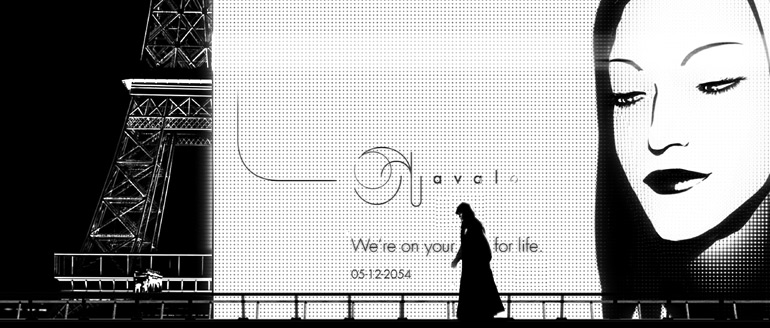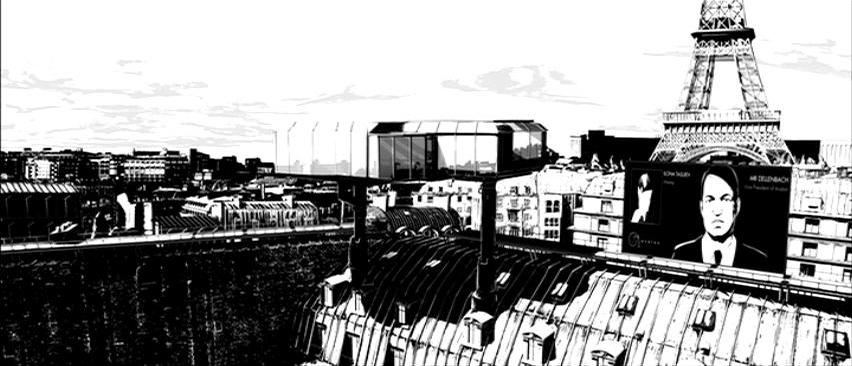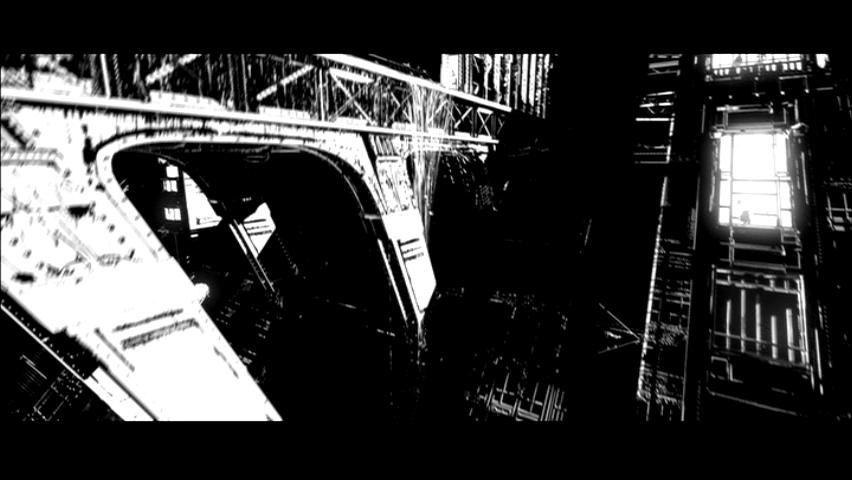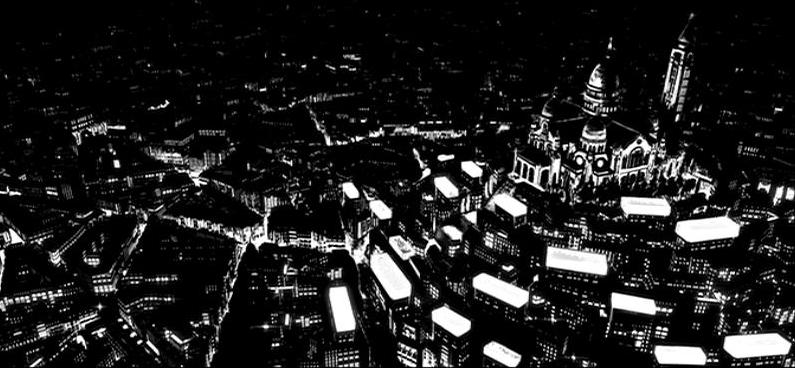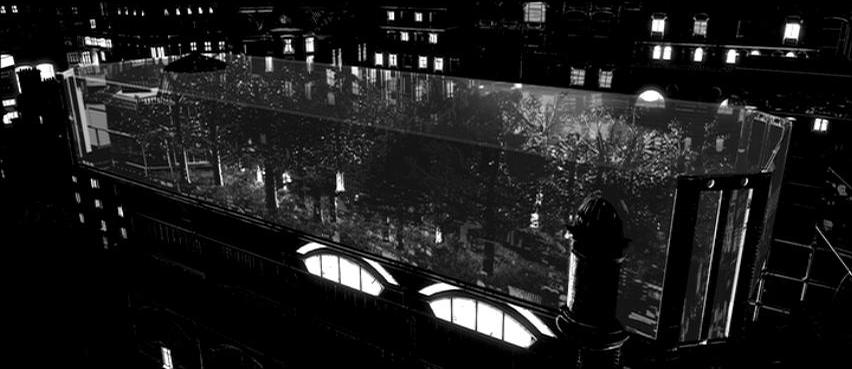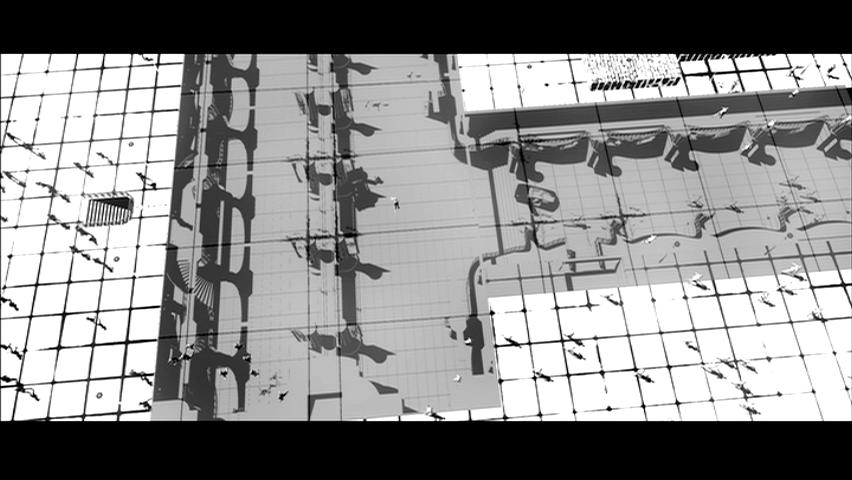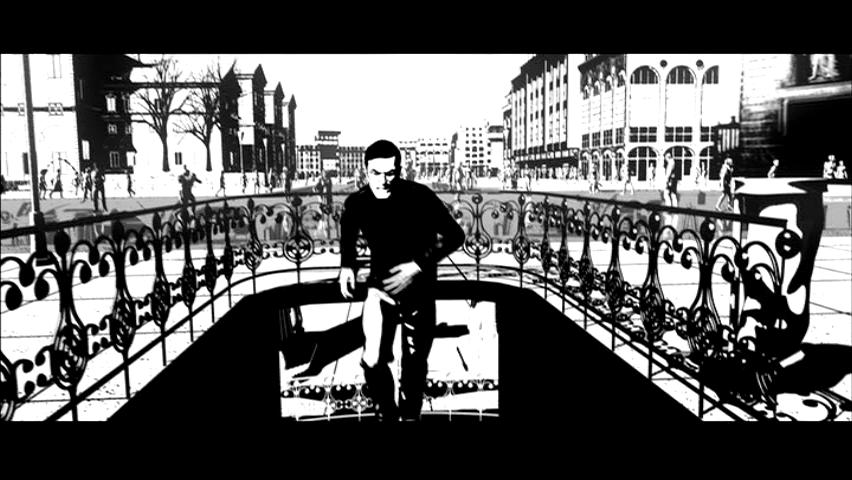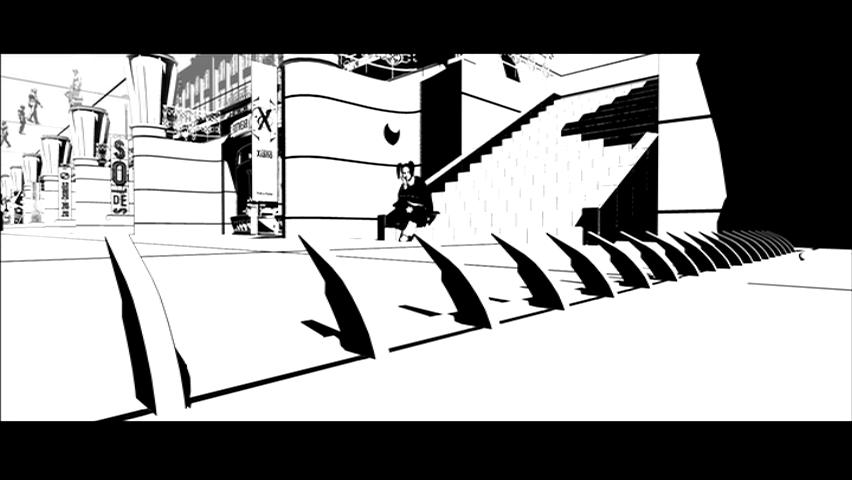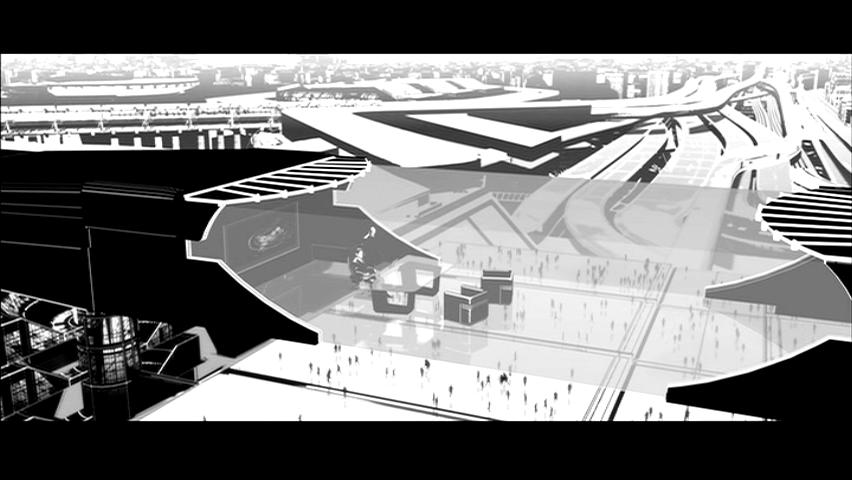T R A N S P A R E N C Y
Renaissance (2006)
Christian Volckman's Paris of 2054 is conceived quite differently from Kurt Wimmel's Libria, in that it fully embraces the existing fabric of the city. The film diverges from most depictions of urban futures by acknowledging that modernist tendencies of demolition and overhaul has long ago given way to a culture of retrofitting, characterized by a great deal of consideration towards history and urban artifacts. The famous city along the Seine is no less recognizable in this future, with landmarks all intact, maintaining much of the existing urban scale. It is as if the city has been repackaged and given even more depth and translucence, layered with clear glass and holographic billboards and prostitutes.
The future Paris retains much of its beauty, yet is visibly affected by climate change and human development. An apparent drop in ocean or river levels has rendered the Seine into a dredged concrete canyon, navigable only through elevated canals and locks. The increasing scarcity of space in one of the most high-priced cities in the world, coupled with presumably strict regulations on maintaining the character of the old city, has resulted in the expansion of the built form deep underground, exposing metro stations, water mains and infrastructure. The grit and darkness associated with extremely high densities is minimized with the evident prosperity demonstrated by a level of sophistication in new architectures. The dominance of glass is indicative of the prestige associated with light and space. Aside from the massive arch housing the Avalon headquarters, most new construction, in keeping with the scale of the city, is integrated into the existing fabric in the form of small-scale interventions. Additional density and high-quality spaces are also achieved with the retrofitting of existing buildings with additional floors enclosed with glass, often functioning as greenhouses to passively regulate the buildings' temperature in hot and cold weather while bringing a slice of the forest – remnants of nature – back into the city.
Public space has also been “upgraded” to multi-level streets and plazas separated by glass floors, where the portals are crafted with the same grain as the fine wrought-iron detailing emblematic of Parisian architecture. Heavy, robust architecture is rejected in favor for sensitive, airy structures. Underground levels are now awash in light, made fully visible, comfortable and safe. Unlike the world of Gilliam's Brazil, everything is exposed, every space is easily seen from the next and their occupants – the pedestrians - become both security guard and voyeur.
The comfort of exposure to casual surveillance and the illusion of security, reflect the image of political transparency that democratic governments and corporations try to impress upon the general population. At the Avalon headquarters, CEO Dellenbach's office is a clear glass box, suspended in full view of thousands of motorists. These gestures of openness, of course, conceal the secrecy and espionage rampant in the film, where businessmen often wield more power than politicians. The tendency towards architectural transparency in contrast to political transparency is as relevant in 2054 as it is today, adding credibility to Volckman's projection of the future and making it very compelling as a work of art.
